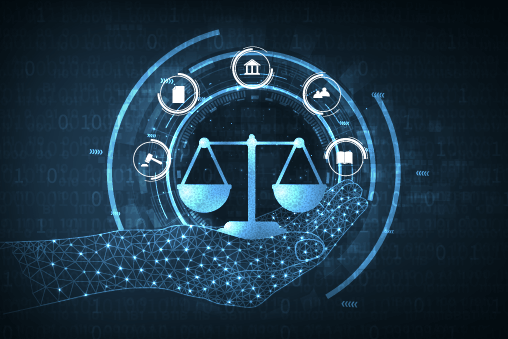
It is not only plaintiffs who need to wait for their cases to be heard in a court of law. Even attorneys deal with prolonged wait times to appear before the court. Though there are cause lists prepared for every court to show the sequence of cases for each day, there is no definite time allocated for the hearing. So when a specific case will come up is anybody’s guess, and lawyers spend a large part of their day waiting in court.
But the good news is that India’s legal processes are changing. Propelled by the pandemic that demanded social distancing, a virtual legal system is emerging, making it possible for citizens to seek justice from anywhere in the country. Between March 2020 and June 2020 alone, over 18000 judicial cases were conducted via videoconferencing by the High Court of Delhi. And these changes in the judiciary system are being supported by the legal powers that be: https://www.hindustantimes.com/india-news/virtual-hearing-promotes-accessibility-should-be-strengthened-says-cji-ramana-101650747148819.html
When a nation-wide lockdown was imposed, video conferencing replaced physical court hearings. Though glitchy to begin with, a virtual courtroom improved and developed and soon lawyers, judges, and litigators were smoothly running proceedings through video conferencing. Over time, the judiciary formalized virtual court rooms, setting aside time slots and days when e-courts would be in session. Lawyers no longer had to wait endlessly for their case hearings, and could continue with their work while maintaining social distancing.
But with the pandemic abating and the courts back to physical hearings, lawyers miss the efficiency that virtual courts brought. At the same time, they also want physical hearings to continue, because some types of cases cannot be dealt with online, resulting in a debate over the format of a post-pandemic judiciary.
In addition to the Chief Justice of India’s (CJI) support for virtualization of courts to help extend justice to the farthest corners and help lawyers everywhere be an active part of the system, there is also the advantage of efficiency. Several virtual virtuoso lawyers state that virtual courtrooms were more efficient and convenient. They could easily access multiple courts, and both lawyers and litigants were not troubled with long wait times or travel. Moreover, for cases that were routine hearings – such as document filing, issuing notices, seeking continuance etc. – and did not require in-person hearings, the online mode was sufficient. Multiple documents were uploaded on a secure server so that judges could access them. There was more transparency, and the proceedings were more fair and cost effective than physical courtrooms.
On the other hand, there are some cases that involve lengthy arguments, convincing a strict judge, or arguing with the opposing counsel. For such cases, lawyers believe, physical courtrooms are a must. In a virtual courtroom they cannot see and gauge the response of the judge when an evidence is submitted, which prevents them from on-the-spot changes in strategy. Likewise, in criminal cases a physical court works better as there is a lot of evidence, arguments, and cross-examination involved.
Many lawyers have become proponents of a hybrid model. They argue that the pandemic compelled legal firms and the justice system to improve their technology infrastructure. Ignoring this advancement and returning to pure physical courts, they believe, would be a waste, and suggest that courts can split their cause lists to separate out cases that require a physical hearing from those that can be handled online.
The debate continues and we can see the judiciary structure returning mostly to physical courts. The Supreme Court however still allows virtual hearings on specific days in the week and for specific cases. CJI NV Ramana has clearly stated his support for virtual courtrooms and the accessibility they offer. To quote him, “Necessity is the mother of all inventions. The pandemic demanded us to transform the way we approach various issues. It has forced us to develop certain good practices which will support us in the days to come , although at a terrible cost. Whatever criticism or obstacle that we may encounter, our mission to render justice cannot stop”.
The COVID-19 pandemic affected multiple industries, and the legal system of India is no exception. Legal processes were digitized and the fledgling concept of virtual courts in India went mainstream. What’s certain is that an electronic system grants full access to information to all parties involved, granting transparency never achieved before. One of the biggest advantages that virtual courtrooms offer is the flexibility to work 24×7 without spatial limitations. The huge backlog of cases burdening the courts resulting in delayed justice can now be tackled efficiently. Overall, virtual courtrooms bring in process and cost efficiencies.
Of course, the glaring digital divide, including network connectivity, power backup, high quality equipment, and tech support, in India is a huge hurdle that must be addressed for online courtrooms to succeed. For example, lower courts in districts and smaller towns will not have access to a digital infrastructure. Data security also needs attention because all documents filed online will be confidential and highly sensitive and would require strong encryption mechanisms.
Regardless of the horror that propelled this change, virtual courtrooms have an optimistic future, albeit with its own set of limitations. India is a developing country and will take time to implement a nation-wide virtual legal system. The upside is that it is happening and has strong support. With robust technology being rapidly set up, court hearings and digitalized case management will make the legal system work better. According to experts, institutionalising virtual courtrooms even in normal situations will ensure access to all litigants and lawyers, and will reduce the cost burden on the legal system. India’s legal system is definitely acquiring a new dimension.